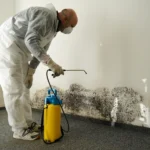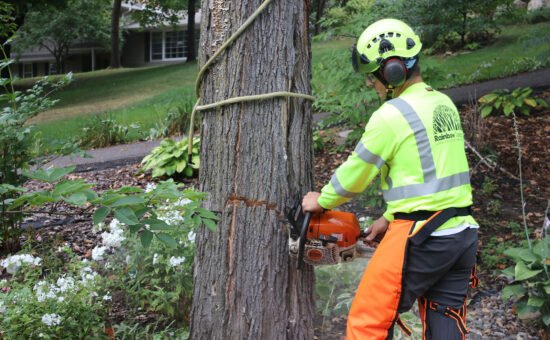Key Takeaways
- Assess the tree’s health and structural stability before attempting removal, ensuring no hidden risks exist.
- Use appropriate, well-maintained tools and wear up-to-date personal protective equipment (PPE).
- Familiarize yourself with recommended cutting techniques to direct the tree’s fall and avoid unintended damage safely.
- Continually evaluate when a project might require the skills and equipment of professional tree removal services.
Table of Contents
- Introduction
- Assessing Tree Health and Stability
- Gathering the Right Tools and Equipment
- Establishing a Safety Zone
- Proper Cutting Techniques
- Stump Removal Considerations
- When to Hire Professionals
- Legal and Environmental Considerations
Introduction
Tree removal is a demanding process that involves more than just cutting down limbs—it requires physical effort, adherence to strict safety protocols, and compliance with local regulations. Whether addressing storm damage or managing overgrowth, each step—from initial inspection to final debris removal—must follow industry best practices to protect property and people. While some homeowners may consider tackling it alone, it’s essential to recognize the potential hazards and value of expert help. Professional services specializing in tree removal in Elkwood bring the experience and equipment necessary to handle the job efficiently and safely. With the proper preparation and support, you can enhance your property’s appearance while prioritizing the safety of everyone involved.
Tree removal can be a cost-effective and empowering DIY project, but it’s essential to understand the risks involved. Factors like tree size, age, proximity to structures, and past storm exposure can transform a healthy tree into a liability. Understanding appropriate techniques, investing in tools, and recognizing personal limitations can reduce risks. Consulting specialists can ensure safety and property preservation when necessary. A holistic understanding can reduce accidents and maintain landscaping value.
Assessing Tree Health and Stability
Before launching into the tree removal process, a thorough visual and physical inspection is indispensable. This step involves taking the time to investigate the tree for signs of decay, disease, and physical instability. Look closely at the trunk and main branches for cracking, peeling, or splitting bark, which can indicate compromised structural integrity. Fungal growth, such as mushrooms at the base or on the trunk, often hints at extensive internal rot. Furthermore, if the tree leans significantly or exhibits heaving at the soil line near the roots, these red flags signal that immediate action is needed; such instability can pose serious dangers during removal. Pay special attention to the environment around the tree: if it’s near utility lines, buildings, or fences, the complexity and risks involved increase dramatically. At this stage, an informed, detailed assessment is the foundation of a safe, successful tree removal, minimizing accidental injury and potential property loss.
Gathering the Right Tools and Equipment
Use the right tools and safety gear to ensure a successful and injury-free removal process. Start with a chainsaw suited to the trunk’s diameter and density, and a quality handsaw for smaller branches and delicate trimming. Protect yourself with PPE such as a hard hat, goggles, and gloves. Wear hearing protection with power tools and steel-toed boots for foot protection. Use ropes, rigging, and a proper harness for larger jobs or trees in precarious positions. Use stable, manufacturer-approved platforms instead of basic ladders for greater safety. The right equipment ensures safer work and better results, ensuring your property is protected and presentable.
Establishing a Safety Zone
Carefully managing the work area is vital to preventing accidents. Before cutting begins, set up a well-defined perimeter using bright cones, signs, or temporary fencing to alert others to the danger. Ensure everyone not directly involved in the work, especially children and pets, remains well outside the boundary. Plan multiple clear escape routes before you begin—trees and limbs may fall unpredictably, and your ability to move quickly could be life-saving. Even experienced professionals regularly reinforce the importance of reviewing and rehearsing escape plans. Documenting your safety strategies and communicating them to anyone assisting you increases confidence and efficiency, ensuring everyone on-site is prepared for emergency scenarios. Properly marking and managing the area saves time, supports situational awareness, and creates a safer job site overall.
Proper Cutting Techniques
To safely fell a tree, follow these steps: limbing, creating a notch on the side facing the intended direction of fall, and making a back cut on the opposite side. This method directs the tree’s fall and reduces the ‘barber chair’ splitting risk. Continually reassess your surroundings and the tree’s movement to ensure the fall path remains unobstructed. Never attempt complex cuts on your own; a second set of hands and eyes can help spot shifting limbs or sudden changes, reducing accident risks. Mastery of these techniques forms the backbone of every safe DIY tree removal project, supporting immediate results and long-term property health.
Stump Removal Considerations
Dealing with the remaining stump is often as challenging as removing the rest of the tree. Mechanical stump grinders can quickly reduce most stumps to mulch below ground level—an efficient solution if you can access the equipment or rent it. For those seeking a less intensive approach, several commercially available chemical treatments can accelerate decomposition, breaking down wood fibers over several months with minimal manual effort. Manual removal, involving digging out the stump and primary roots, can be exhausting but is suitable for more modestly sized trees or when heavy machines can’t be brought onto the site. Consider your property’s future use when deciding the method: Stumps left to decay naturally can attract pests or cause tripping hazards. At the same time, grinder mulch offers a quick path to replanting or reseeding. Every method requires precautions and planning, so choose according to your long-term landscaping vision and available resources.
When to Hire Professionals
Some tree removal tasks fall well beyond even the most enthusiastic homeowner’s reach. Hiring professionals is the wisest decision if the tree is giant (typically taller than 15-30 feet), located near power lines or valuable structures, or shows signs of extreme instability. Certified arborists bring not only advanced tools like bucket trucks and winches, but also years of training in safe removal techniques for various scenarios. Their expertise can spare you from serious injury, property damage, and costly mistakes, particularly when dealing with intricate root systems or compromised trunks. In tough cases, professionals will ensure that your removal complies with all local regulations and environmental guidelines, removing stress and uncertainty. Trusting specialists is an investment in your property’s safety and peace of mind.
Legal and Environmental Considerations
Local ordinances often regulate tree removal, especially for heritage or protected species. It’s crucial to consult local authorities for permits and consider the environmental impact of tree removal. Trees support wildlife, improve air quality, and prevent soil erosion. Proper planning and adherence to best practices maintain the community’s natural resources. Consult local environmental and legal resources for informed decisions. For regional requirements, consult certified arborists or local government websites. Timber Works Tree Care offers comprehensive solutions tailored to homeowners’ needs, ensuring safety and legal compliance. For more information, explore The Arbor Day Foundation’s Tree Removal Guide.











